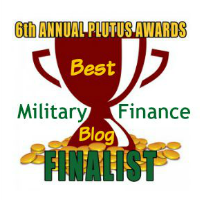
Gunfire at Long Tan: The FO's Story
by Maj M.D.(Morrie) Stanley, M.B.E.
Until March 1966 1RAR, 105 Bty RAA and my unit 161 Bty, RNZA were attached to the U.S. 173D Airborne Brigade at Bien Hoa. In May/June 1966 5RAR and 6RAR arrived in the theatre to establish the 1 Australian Task Force Area at NUI DAT.
As 161 Bty was in direct support of 6RAR, I was assigned as FO to D Coy from the time 6RAR assembled on the beach at Vung Tau. The sojourn on the beach ended when we occupied the base at Nui Dat. From then on my two radio operators and I, the three Kiwi gunners, shared the heat and mud with D Company. We had D Coy laundry numbers and were involved in all of their activities. By August 1966 we were part of the establishment.
The circumstances preceding the battle of Long Tan, the course of it, and the outcome, are now fairly well known. Many of us know more about the battle now than we did then. This is my recollection as D Coy's FO at Long Tan.
I recall on the morning of 18th August, getting ready to go on a patrol with D Coy. We assembled near the perimeter of the Task Force and walked out into the tactical area. The mission was to relieve a much smaller patrol from B Coy which had been out for some time searching for a VC mortar base plate position from which an attack had been launched on the Task Force base. The rendezvous with the B Coy patrol and the hand over of information between the two patrols was uneventful.
When we arrived at the rendezvous I spoke with the FO with the B Coy patrol, Captain Pat Murphy, another New Zealander. He briefed me on the situation, explained where we were, about the track system and the understanding of the next line of movement. Then we had a very comfortable lunch.
After that Maj Harry Smith, the Company Commander, decided on the method of advance. It was my role to stay with the Company Commander all the time, no matter where he went, so that I could provide any advice or support that he wanted. I needed to know how he was manoeuvring his platoons. I also needed to know our location, what direction the platoons were and how far away they were from me.
Initial contact began with the chatter of small arms fire. It was quite exciting and was regarded as something to be expected, although not something which D Coy had often come across. At that time Company Headquarters was not directly involved in the contact at the front from where the sound of rifle and machine gun fire was coming. I was keen and enthusiastic to apply gun fire into the area where I knew it would be useful. However, at that time we received VC mortar fire from the south generally and into the area where Company Headquarters was waiting. Harry Smith decided that we would move away from that place very quickly. He did not need to emphasise any orders; we simply moved. It was obvious to us that the enemy was not observing that fire because it became ineffective. After that, Harry Smith appreciated that 11 Platoon was getting into trouble. I could hear the voices on the company command net and knew that Harry Smith was trying to have 10 Platoon assist 11 Platoon. That was not totally successful.
There came a time when neither Harry Smith nor I could perform our role while we were moving and, if we could not perform our functions, then the platoons would be in greater trouble. So it was decided to stop and establish some firm ground with one of the platoons. It was in that place where the wounded and members of the other platoons were gathered to establish a company defended area. My most intense recollections are of that final position.
Soon after initial contact, Harry Smith and I agreed on the grid reference of our location and he requested fire support. Battery Fire Missions were fired at some distance from the known position of 11 Platoon. Later, I upgraded the fire to Regimental Fire Missions when the situation had deteriorated and there were obviously large numbers of VC. At the time my response was instinctive and not based on firm information about the size or location of the enemy force.
Rain started late in the day as usual, but soon developed into a tremendous storm. This deluge and the fact that our final position was on a slight reverse slope were two factors in our favour. Rain and intense gunfire caused this area to be shrouded in smoke, steam and fog.
This helped me because my judgement of distance was assisted by the observation (or lack of it) of flash against this screen and the enemy were silhouetted, as were our own troops.
I realised how important it was that my communications remained effective and that the guns were able to maintain the constant and accurate fire that they were called upon to produce. I needed the comfort of knowing that my Battery Commander (Harry Honnor}, an experienced gunner, was on the end of a radio, and could provide constant support for me. On one occasion I actually reported on that net that the situation was too confused to use the guns and it was Harry who suggested I engage another grid reference and adjust the fire from that position. That
Fortunately my radio communications on the artillery net remained effective. Although we could not hear all messages, all our transmissions were heard at Nui Dat. My operator, Willie Walker, was able to keep the set operational under the most trying conditions until the battery collapsed at the end of the battle. He seemed to be concerned only with the radio and I with my map.
I wondered whether the fire called down was an over-violent reaction to the situation because there was no way of knowing the total size of the enemy force at the time. I had seen several groups 20 to 50 strong moving about between the rubber trees. I have since found out that the fire was justified. 108 men of D Coy had engaged about 1500 VC.
I have been asked how I was able to direct the fire. It was essential that I knew my location, and that I knew the direction of the platoons and roughly how far away they were. I tried to have my map oriented with the north point on the map facing north, then looked towards the noise of contact and small arm fire. That was the only way I had of determining the grid reference at which to open fire. It was difficult to tell the distance the leading troops were from me, so the safety factor was that fire was opened some considerable distance, even up to 1,000 metres, away from where we were. Adjustments were made to move the gun fire closer. On one occasion I was told on the company net that it was too close. I actually screamed a number of times over the radio net the word "stop". This was because I could not hear many of the acknowledgements from the gun area when transmitting fire orders. Normally the artillery observers will give fire orders and will receive the acknowledgement. When I screamed "stop", the guns had to stop and they did. Another occasion when the guns had to stop and they were stopped for me, was when a helicopter was despatched to resupply small arms ammunition into the company area.
Sergeant Bob Buick took command of 11 Platoon after his platoon commander was killed. When he requested artillery fire on his own position I spoke with him directly on the company radio net. He had apparently assessed that with about 10 men left out of 28, they could not survive more than another 10-15 minutes.
Even though he insisted, I declined. He advised me later that the fall on shot continued to be 50-100 metres from him and amongst the VC.
Everyone in the company was running short of small arms ammunition. I had some for the Armalite and Willie had some, but we did not have a particular use for it. We were too busy. Jack Kirby, a very fine Company Sergeant-Major, came to me and said, "Excuse me, Sir, have you any spare ammunition?" I could not understand why he should be so polite. I told him to help himself from my pack and he did. He said, "I am leaving you one magazine". He also left Willie Walker with one.
In the later stages of the battle when we were all in this base of ours with the wounded, members of the platoons had joined us, and there were far more people around in the Company Headquarters area. But it was at that time there were two incidents, one which impressed, and one which worried me. Most of the men were young, of the age 20 or so. One man I heard saying "steady, aim, fire". I think that was an example of what makes a soldier tick. After thorough training and even under stress he knew what was required and that is how he did it.
It was just at that time, in fact just after Jack Kirby had collected ammunition, that I was very concerned because the VC had started attacking from a different direction. I ordered the removal of one battery from the Regimental Fire Mission and applied it in that area. Jack Kirby saw it as well and we were very worried that we were going to be done. It did not deter Jack, he just went around collecting ammunition and distributing it.
The arrival of the relief force seemed to signal the end of the battle and, later Harry Honnor suggested that harassing fire in depth continue throughout the night.
When the battlefield was cleared the next morning an eerie silence pervaded a scene of utmost devastation. The men may have been mentally and physically exhausted after their ordeal but they continued their duties at Long Tan until it was time to return to the Task Force base at Nui Dat.
A Digger from D Coy later recalled:
"It got to the stage where we all thought that there was no way we could get out of there. The only help we seemed to get was from the artillery. Every time the enemy troops got close to us it seemed that a salvo of artillery would land amongst them, just in time. We didn't have all that much ammunition anyway, and we were using our fire properly and not wasting it. When they did build up and move in quickly it was always the artillery that kept them out of our way."
I am proud to have been with D Company 6RAR on that day.
Maj M.D.(Morrie) Stanley, M.B.E.
If you didn't find what you're looking for, use the search bar below to search the site:



